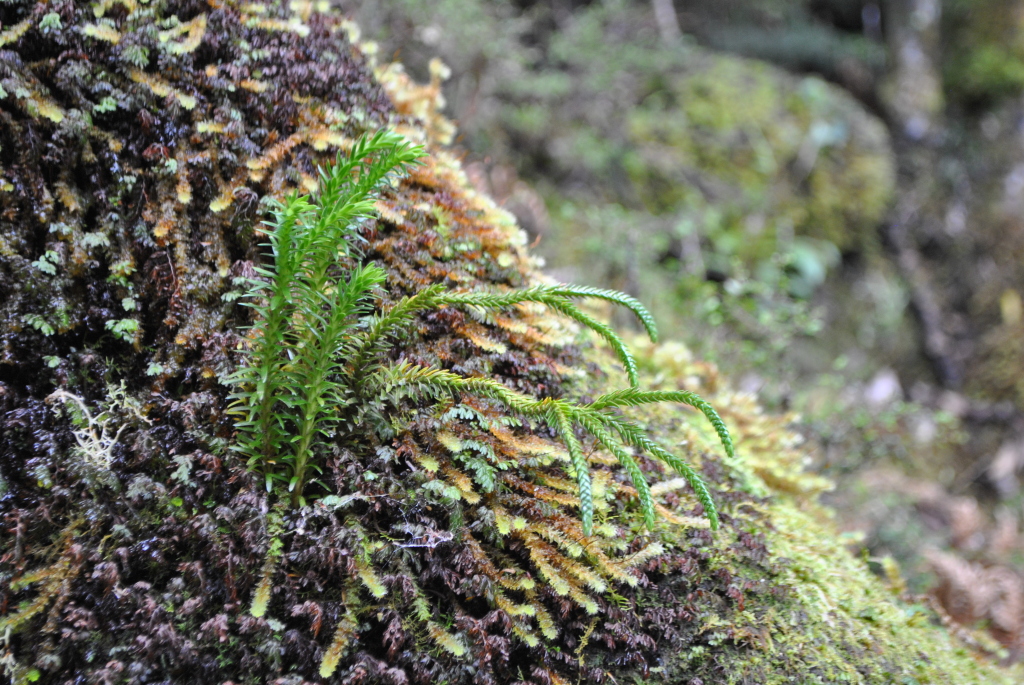Phlegmariurus
HolubPlants mostly epiphytic, sometimes lithophytic, branches usually tufted and pendent, without main indeterminate stem; roots in one basal tuft. Bulbils absent. Fertile leaves smaller than sterile leaves and 4-ranked (Victorian plants); sporangia restricted to defined zones; spores triangular in polar view with convex faces. Gametophyte subterranean, cylindric, saprophytic.
200-300 species, primarily tropical, 11 species in Australia, 1 in Victoria.
Phlegmariurus has previously been included in Huperzia s. lat. However, phylogenetic analyses of chloroplast DNA sequences show that the sampled species of Huperzia s. lat. do not confidently form an exclusive group that has descended from a single ancestor (i.e. a monophyletic group). Instead, Huperzia and Phlegmariurus form distinct lineages closely related to the morphologically divergent Phylloglossum, but the exact relationships among these genera is uncertain (Field et al. 2016; Ji et al. 2008; Wickstrom & Kenrick 1997). Consequently, to be certain that only monophyletic genera are recognised either Phlegmariurus needs to be recognised or Phylloglossum needs to be included in Huperzia (sensu Christenhusz et al. 2011). This latter approach overlooks the morphologically diversity among these lineages, so recognition of Phlegmariurus is favoured here.
 Spinning
Spinning

